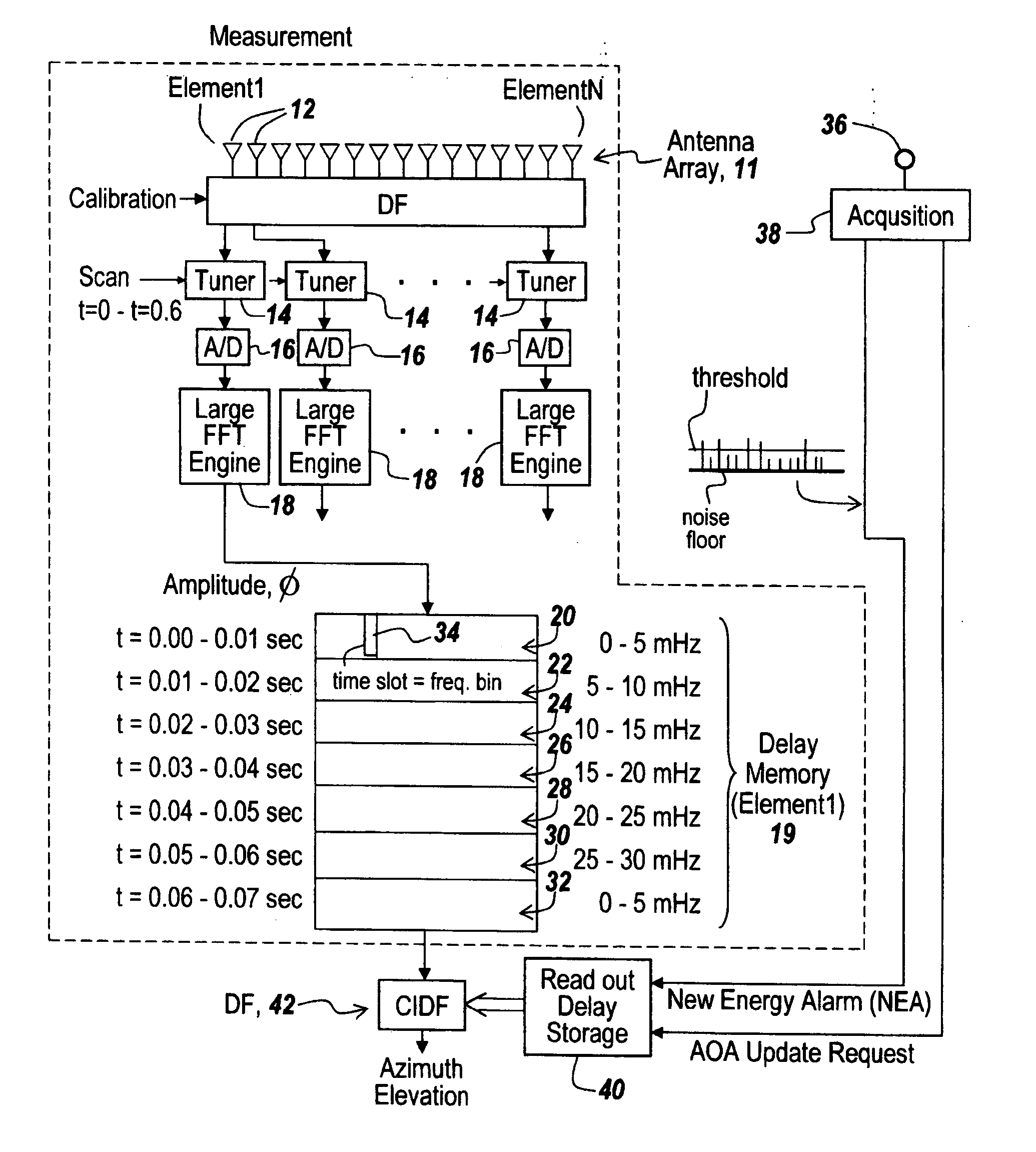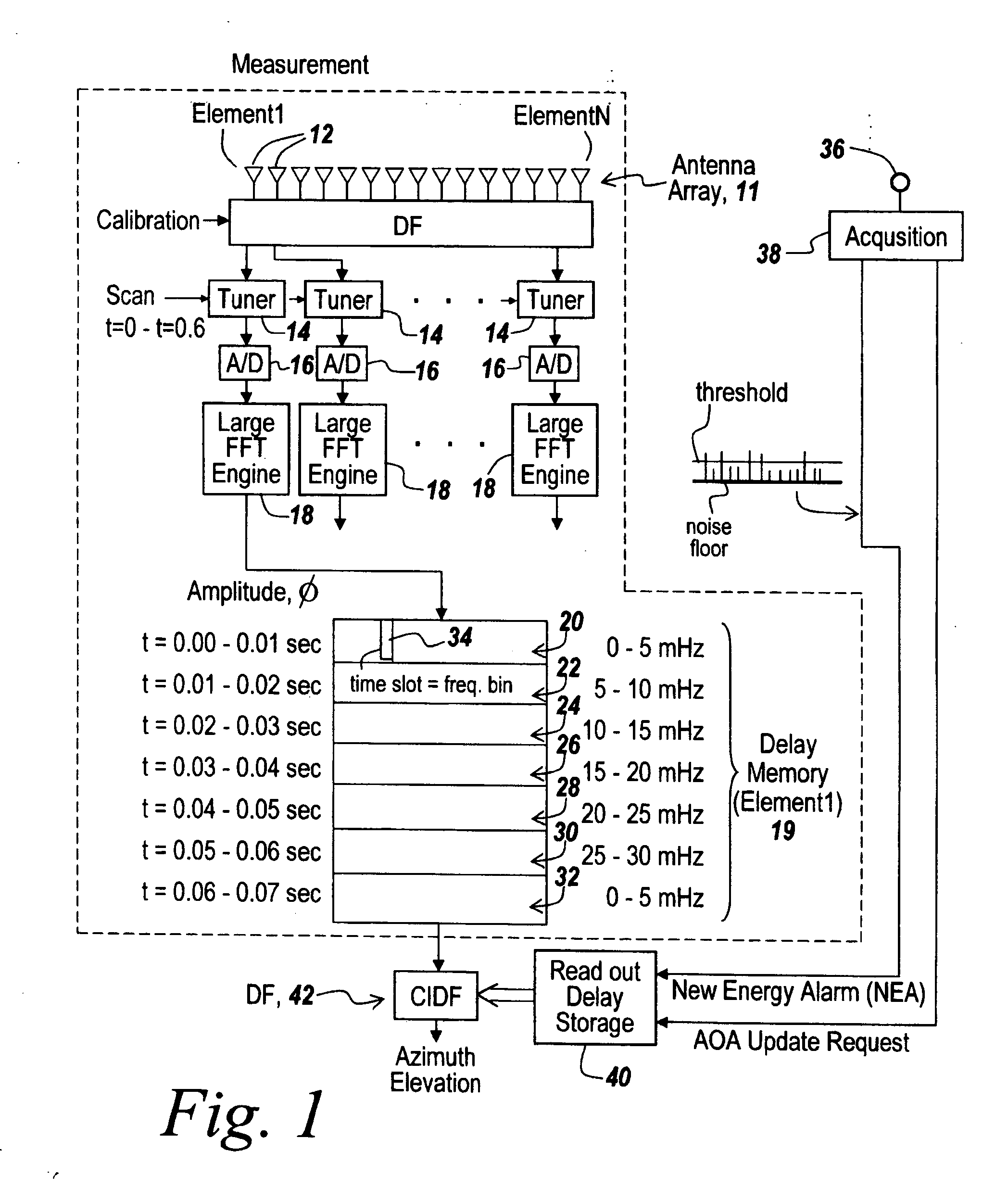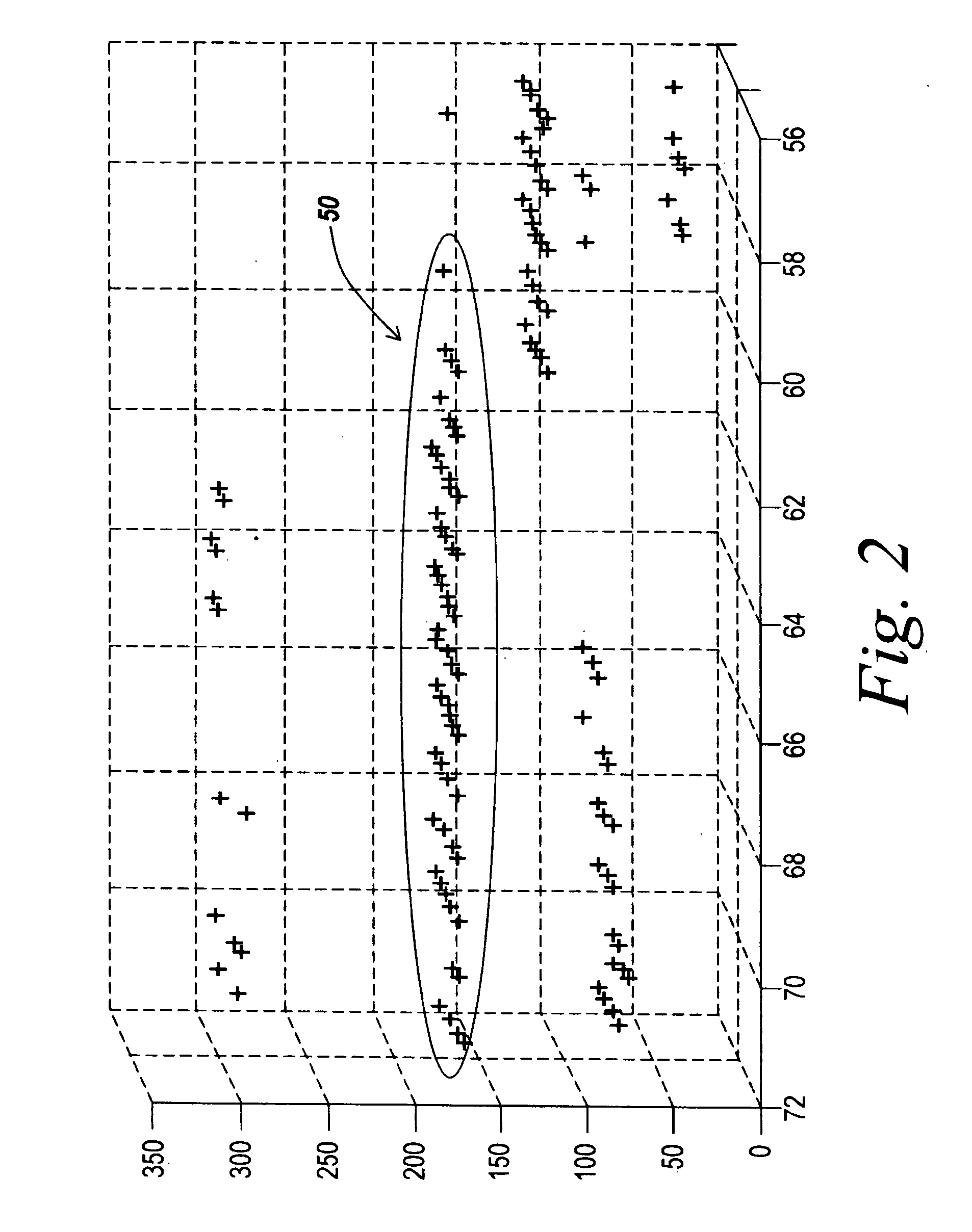Method and apparatus for direction finding
a direction finding and direction technology, applied in the direction of multi-channel direction-finding systems using radio waves, instruments, measurement devices, etc., can solve the problems of not being able to find the direction on a signal that had disappeared, the requirement of troublesome, and the emitter could come on briefly and then disappear, so as to improve the accuracy of the bearing line
- Summary
- Abstract
- Description
- Claims
- Application Information
AI Technical Summary
Benefits of technology
Problems solved by technology
Method used
Image
Examples
Embodiment Construction
[0052] Referring now to FIG. 1, in one embodiment, as part of separating out the processing, a measurement section indicated by dotted line 10 is provided including an antenna array 11 that is coherently sampled by coherently sampling antenna elements 12, with the output of every antenna element being supplied to its own tuner 14 and then to an associated analog-to-digital converter 16, the output of which is directly coupled to a very large Fast Fourier Transform engine 18. The outputs of all of the FFT engines are coupled to delay storage 19, that in turn is segmented into frequency bands as illustrated at 20-32 into which data relating to amplitude and phase is stored in frequency bins, one of which being illustrated at 34.
[0053] In one embodiment the Transform is a 16-K transform. With modern computers, one can do very large FFTs in a very short period of time. Very large FFTs can convert large numbers of samples, meaning that one could process very large bandwidths, for instan...
PUM
 Login to View More
Login to View More Abstract
Description
Claims
Application Information
 Login to View More
Login to View More - R&D
- Intellectual Property
- Life Sciences
- Materials
- Tech Scout
- Unparalleled Data Quality
- Higher Quality Content
- 60% Fewer Hallucinations
Browse by: Latest US Patents, China's latest patents, Technical Efficacy Thesaurus, Application Domain, Technology Topic, Popular Technical Reports.
© 2025 PatSnap. All rights reserved.Legal|Privacy policy|Modern Slavery Act Transparency Statement|Sitemap|About US| Contact US: help@patsnap.com



